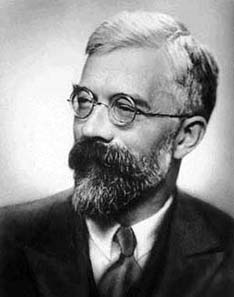Ronald Fisher (Ronald Aylmer Fisher)

Ronald Fisher gained a scholarship to study Mathematics at the University of Cambridge in 1909, gaining a First in Astronomy in 1912. In 1915 he published a paper The evolution of sexual preference on sexual selection and mate choice. He published The Correlation Between Relatives on the Supposition of Mendelian Inheritance in 1918, in which he introduced the term variance and proposed its formal analysis. He put forward a genetics conceptual model showing that continuous variation amongst phenotypic traits measured by the biostatisticians could be produced by the combined action of many discrete genes and thus be the result of Mendelian inheritance. This was the first step towards the establishment of population genetics and quantitative genetics, which demonstrated that natural selection could change allele frequencies in a population, resulting in reconciling its discontinuous nature with gradual evolution. Joan Box, Fisher’s biographer and daughter says that Ronald Fisher had resolved this problem in 1911. Between 1912 and 1922 Fisher recommended, analyzed (with flawed attempts at proofs) and vastly popularized Maximum likelihood. In 1919 Ronald Fisher was offered a position at the Galton Laboratory in University College London led by Karl Pearson, but instead accepted a temporary job at Rothamsted Research in Harpenden to investigate the possibility of analysing the vast amount of data accumulated since 1842 from the “Classical Field Experiments” where he analysed the data recorded over many years and published Studies in Crop Variation in 1921. In 1928 Joseph Oscar Irwin began a three-year stint at Rothamsted and became one of the first people to master Fisher’s innovations.
His first application of the analysis of variance was published in 1921. Fisher’s article On a distribution yielding the error functions of several well known statistics (1924) presented Pearson’s chi-squared test and William Gosset’s Student’s t-distribution in the same framework as the Gaussian distribution and where he developed Fisher’s z-distribution a new statistical method, commonly used decades later as the F distribution. Ronald pioneered the principles of the design of experiments and the statistics of small samples and the analysis of real data. In 1925 he published Statistical Methods for Research Workers, one of the 20th century’s most influential books on statistical methods. Fisher’s method[25][26] is a technique for data fusion or “meta-analysis” (analysis of analyses). This book also popularized the p-value, and it plays a central role in his approach. Fisher proposes the level p = 0.05, or a 1 in 20 chance of being exceeded by chance, as a limit for statistical significance, and applies this to a normal distribution (as a two-tailed test), thus yielding the rule of two standard deviations (on a normal distribution) for statistical significance. The 1.96, the approximate value of the 97.5 percentile point of the normal distribution used in probability and statistics, also originated in this book. In 1957, a retired Fisher emigrated to Australia where he spent time as a senior research fellow at the Australian Commonwealth Scientific and Industrial Research Organisation (CSIRO) in Adelaide, where he died in 1962, with his remains interred within St Peter’s Cathedral.
Born
- February, 17, 1890
- United Kingdom
- East Finchley, London, England
Died
- July, 29, 1962
- Adelaide, Australia
Cemetery
- St Peter's Cathedral
- Adelaide, Australia

